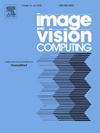Advancing brain tumor segmentation and grading through integration of FusionNet and IBCO-based ALCResNet
IF 4.2
3区 计算机科学
Q2 COMPUTER SCIENCE, ARTIFICIAL INTELLIGENCE
引用次数: 0
Abstract
Brain tumors represent a significant global health challenge, characterized by uncontrolled cerebral cell growth. The variability in size, shape, and anatomical positioning complicates computational classification, which is crucial for effective treatment planning. Accurate detection is essential, as even small diagnostic inaccuracies can significantly increase the mortality risk. Tumor grade stratification is also critical for automated diagnosis; however, current deep learning models often fall short in achieving the desired effectiveness. In this study, we propose an advanced approach that leverages cutting-edge deep learning techniques to improve early detection and tumor severity grading, facilitating automated diagnosis. Clinical bioinformatics datasets are used to source representative brain tumor images, which undergo pre-processing and data augmentation via a Generative Adversarial Network (GAN). The images are then classified using the Adaptive Layer Cascaded ResNet (ALCResNet) model, optimized with the Improved Border Collie Optimization (IBCO) algorithm for enhanced diagnostic accuracy. The integration of FusionNet for precise segmentation and the IBCO-enhanced ALCResNet for optimized feature extraction and classification forms a novel framework. This unique combination ensures not only accurate segmentation but also enhanced precision in grading tumor severity, addressing key limitations of existing methodologies. For segmentation, the FusionNet deep learning model is employed to identify abnormal regions, which are subsequently classified as Meningioma, Glioma, or Pituitary tumors using ALCResNet. Experimental results demonstrate significant improvements in tumor identification and severity grading, with the proposed method achieving superior precision (99.79%) and accuracy (99.33%) compared to existing classifiers and heuristic approaches.

求助全文
约1分钟内获得全文
求助全文
来源期刊

Image and Vision Computing
工程技术-工程:电子与电气
CiteScore
8.50
自引率
8.50%
发文量
143
审稿时长
7.8 months
期刊介绍:
Image and Vision Computing has as a primary aim the provision of an effective medium of interchange for the results of high quality theoretical and applied research fundamental to all aspects of image interpretation and computer vision. The journal publishes work that proposes new image interpretation and computer vision methodology or addresses the application of such methods to real world scenes. It seeks to strengthen a deeper understanding in the discipline by encouraging the quantitative comparison and performance evaluation of the proposed methodology. The coverage includes: image interpretation, scene modelling, object recognition and tracking, shape analysis, monitoring and surveillance, active vision and robotic systems, SLAM, biologically-inspired computer vision, motion analysis, stereo vision, document image understanding, character and handwritten text recognition, face and gesture recognition, biometrics, vision-based human-computer interaction, human activity and behavior understanding, data fusion from multiple sensor inputs, image databases.
 求助内容:
求助内容: 应助结果提醒方式:
应助结果提醒方式:


